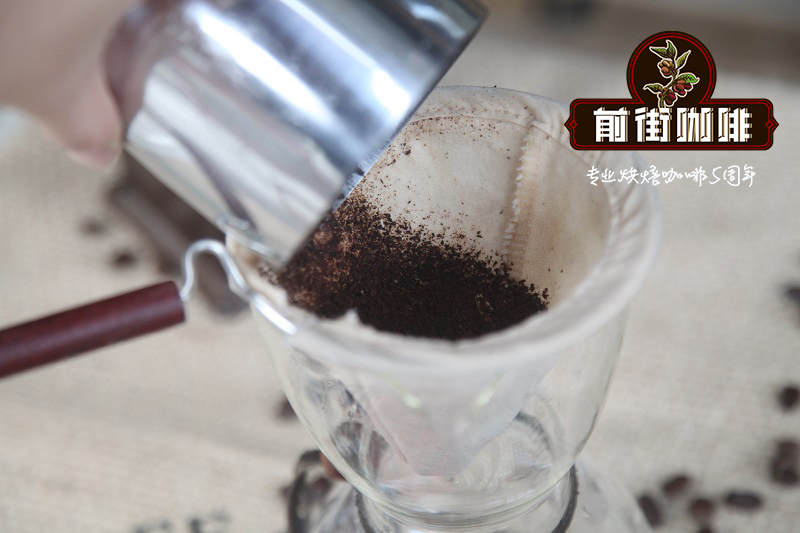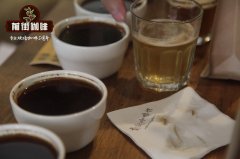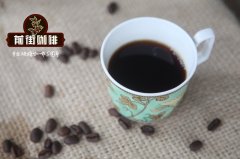Is the price of Ethiopian coffee beans expensive? introduction of Ethiopian coffee beans. Is Ethiopian coffee good?

Professional coffee knowledge exchange more coffee bean information please follow the coffee workshop (Wechat official account cafe_style)
● Essel Coffee Bean Story
Ethiopia is located in a country full of wonders, where Arabica coffee comes from. The Kaffa Forest is the beginning of everything. Kaffa is located in the southwest of Ethiopia.
In the centuries-long natural evolution of Kaffa, about 5000 species of coffee have been born. At present, the local community manages about 12000 hectares of Kaffa wild coffee area. Through the introduction of participatory forest management (Participatory Forest Management, or PFM), about 4500 farmers have the right to legally harvest wild coffee cherries and have an obligation to protect the forest.
As for Kaffa, it is rumored that it was the first place to brew coffee, and for coffee people, it is as fascinating as the Garden of Eden.
In Kaffa, an area called Bonga, more than 100 Ethiopians are dedicated to growing high-quality Arabica coffee. Here has an excellent coffee growing environment, elevation between 1600-1900 meters, red soil, suitable temperature. The region has high rainfall, so it is considered to be one of the areas with the highest rainfall in Ethiopia. As one of the first two biological conservation circles in Ethiopia, Gesha is known as a region of Kaffa.
Kaffa coffee (originally Kaffa types) usually includes: Gimbo, Gewata and Chena. "
Coffee cultivation in ● Ethiopia
Since Ethiopia changed the administrative division around 1995, the greatest impact on the coffee area is that the original Sidamo Sidamo province is divided into the new Sidamo Sidama (the original minority), and most of it is classified into the Oromia Oromia state, and Yegashifi, which used to belong to the Sidamo province, is now included in the new Gaio district Gedeo.
At present, there will be a mixture of new and old regional names in the Ethiopian coffee products in circulation on the market. Here we take the new regional division as the basis, combined with the administrative region to understand the coffee growing map of Ethiopia.
The coffee cultivation of [Sidamo] and [Yega Chuefei] mostly belongs to the pastoral coffee model, in which coffee farmers plant coffee trees near their living areas and harvest them during the harvest season. it is then sent to a nearby treatment plant built on water for unified treatment (or purchased by a middleman). In addition to a small number of plantations that have the strength to grow, pick and handle raw coffee beans independently, many coffee beans from different regions and varieties will be centrally processed by the processing plant and then sent to the auction house for official evaluation and grading.
This is one of the reasons why many Ethiopian coffee beans are named after processing plants or cooperatives, and it is also one of the reasons why the same batch of coffee beans are mixed with multiple coffee varieties. even the flavor of different batches of coffee beans produced by the same treatment plant will be significantly different.
● Essel coffee bean variety
Nearly 2000 coffee varieties have been recorded in Ethiopia, including 1927 native varieties and 128 imported varieties. So just by looking at the appearance, Esther's coffee variety is "Grand View Garden", which has everything, long, short, thin, fat.
Long particles are found in all coffee growing areas in Ethiopia. From the actual proportion seen, there are more long particles in the western Jimma, including Limmu and Kaffa, and less in sidama (Sidamo) or yirgacheffe (Yega Sheffield).
Small particle species, the appearance is relatively round, the bean body is very small, mostly between 14-15 orders, this variety should be the most familiar to us, in Sidamo and Yegashiri can often see their figure, I have also seen in a harrar sample, also seen in Jimma local sales of coffee beans, compared to other regions, sidama and yigracheffe and surrounding arsi, guji have more native varieties of this small particles.
● Essel Coffee Bean brand recommendation
Qianjie Coffee freshly roasted single Essel beans-such as Yega Sheffield and Sidamo Coffee are fully guaranteed in brand and quality and are suitable for brewing in a variety of utensils. And more importantly, the performance-to-price ratio is extremely high, a bag of half a pound 227 grams, the price is only 70-90 yuan. According to the calculation of 200ml per cup of coffee and the ratio of powder to water at 1:15, 15 cups of fine coffee can be made in a bag, and each cup of coffee only costs about 5 or 6 yuan, which is very cost-effective for cafes to sell dozens of yuan a cup.
Qianjie coffee: Guangzhou bakery, the store is small but a variety of beans, you can find a variety of unknown beans, but also provide online store services. Https://shop104210103.taobao.com
Important Notice :
前街咖啡 FrontStreet Coffee has moved to new addredd:
FrontStreet Coffee Address: 315,Donghua East Road,GuangZhou
Tel:020 38364473
- Prev

Essex Coffee you must know: Essex Coffee Bean Story _ Essel Coffee Bean Brand recommendation
Professional coffee knowledge exchange more coffee bean information please follow the coffee workshop (Wechat official account cafe_style) Africa is the third largest coffee producing region in the world, while Ethiopia is the legendary birthplace of coffee! As for Yegashev, it is one of the major coffee producing areas in Ethiopia. When the position is 1700 2100 meters above sea level, it produces Arabica (A
- Next

Analysis on the mixed situation of Essel Coffee Bean varieties _ the reasons for the complexity of taste and flavor of Ethiopian coffee beans
Professional coffee knowledge exchange more coffee beans Please pay attention to the coffee workshop (Wechat official account cafe_style) if you are students who like African beans very much, it should be easy to find that beans in Ethiopia are generally of different sizes and have significantly lower evenness than those in Kenya. Whether it's Yega Xuefei or Sidamo, whether it's washing or tanning, sometimes the same batch.
Related
- Detailed explanation of Jadeite planting Land in Panamanian Jadeite Manor introduction to the grading system of Jadeite competitive bidding, Red bid, Green bid and Rose Summer
- Story of Coffee planting in Brenka region of Costa Rica Stonehenge Manor anaerobic heavy honey treatment of flavor mouth
- What's on the barrel of Blue Mountain Coffee beans?
- Can American coffee also pull flowers? How to use hot American style to pull out a good-looking pattern?
- Can you make a cold extract with coffee beans? What is the right proportion for cold-extracted coffee formula?
- Indonesian PWN Gold Mandrine Coffee Origin Features Flavor How to Chong? Mandolin coffee is American.
- A brief introduction to the flavor characteristics of Brazilian yellow bourbon coffee beans
- What is the effect of different water quality on the flavor of cold-extracted coffee? What kind of water is best for brewing coffee?
- Why do you think of Rose Summer whenever you mention Panamanian coffee?
- Introduction to the characteristics of authentic blue mountain coffee bean producing areas? What is the CIB Coffee Authority in Jamaica?

